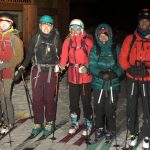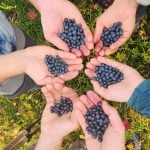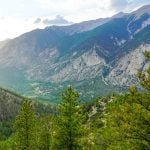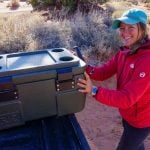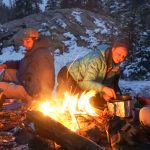An Ode to the Trees (in honor of Earth Day)
As a professional biologist, one of my favorite topics to chat about on the trail or skin track is the trees around us. I have found that not many people really grasp just how amazing, tough, and awe inspiring the trees around us really are. So, Emma and I are going to give you a low down on some of the most epic trees we’ve come across, and some cool facts about them you can share with your friends. Hopefully, you will develop a deeper understanding and respect for the gentle giants that surround you as you are out recreating.
Ponderosa Pine (Pinus ponderosa)
Starting things off with my personal favorite tree and arguably the most iconic tree of the American west: the Ponderosa Pine.
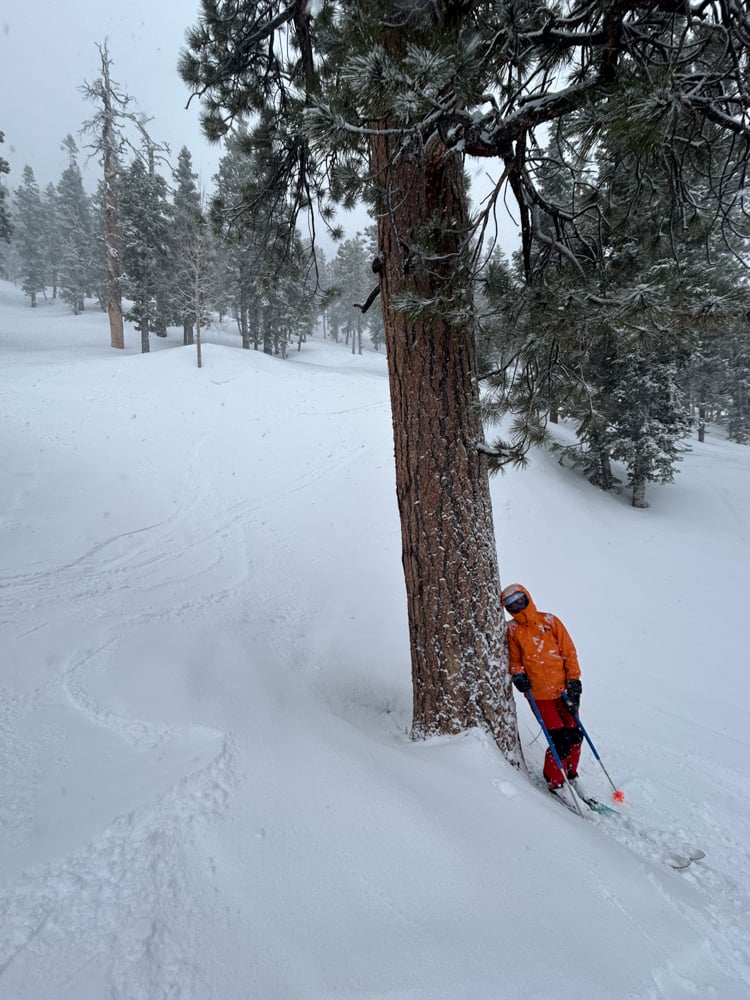
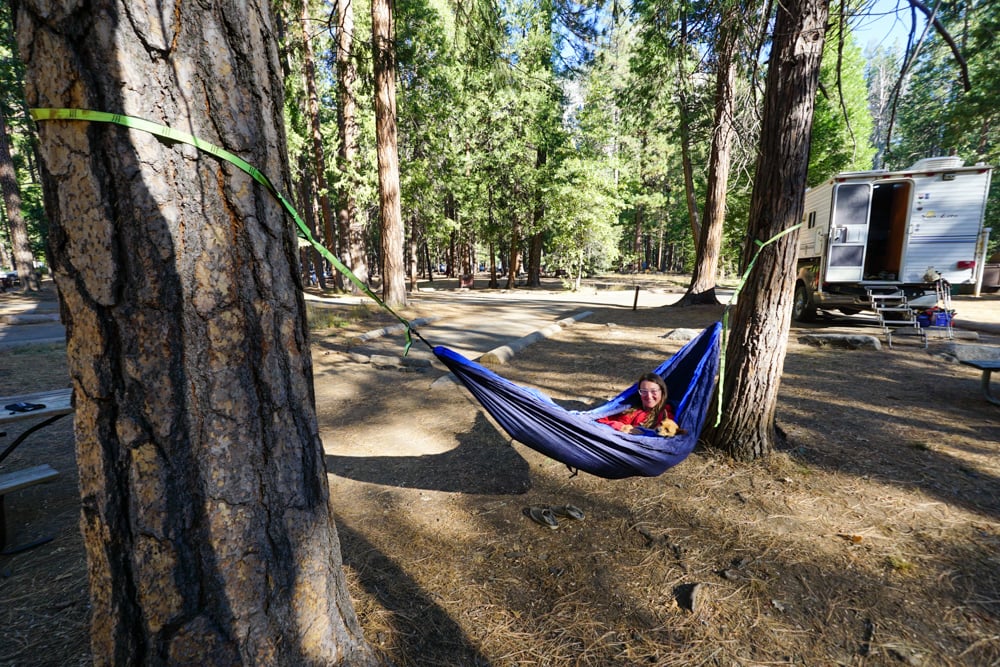
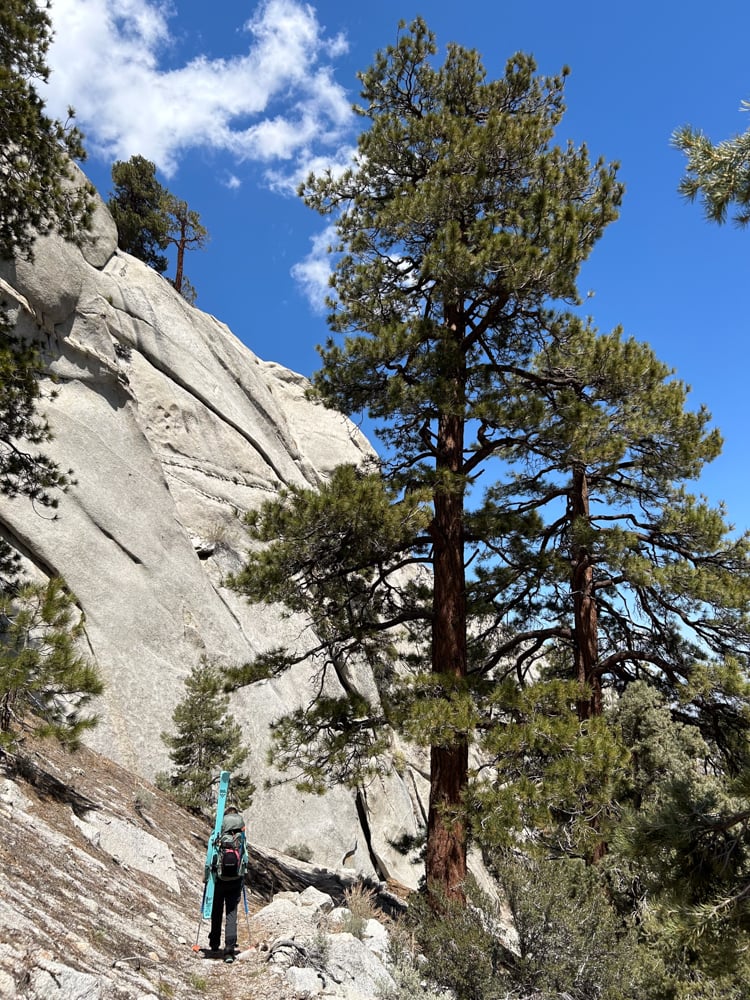
Cool Facts
Ponderosa means ‘heavy wood.’ The ponderosa pine is highly fire resilient through its somewhat fireproof bark. Its pine cone is the iconic pine cone most people picture when they think of a pine cone. Ponderosas are extra special because their barks smells like vanilla or butterscotch, so be sure to give them a hug and get a whiff of their lovely aroma.
Where can they be found?
Ponderosa pines are so iconic because of their widespread distribution. They can be found in lower elevation arid foothills from Texas to British Columbia. We often see them when we are out rock climbing in the South Platte of Colorado and the Eastern Sierra of California (found alongside their doppelgänger, the Jeffrey Pine). Emma and I also encountered them skiing in Lee Canyon outside of Las Vegas, where I proposed under a big beautiful ponderosa pine on the ski slope.
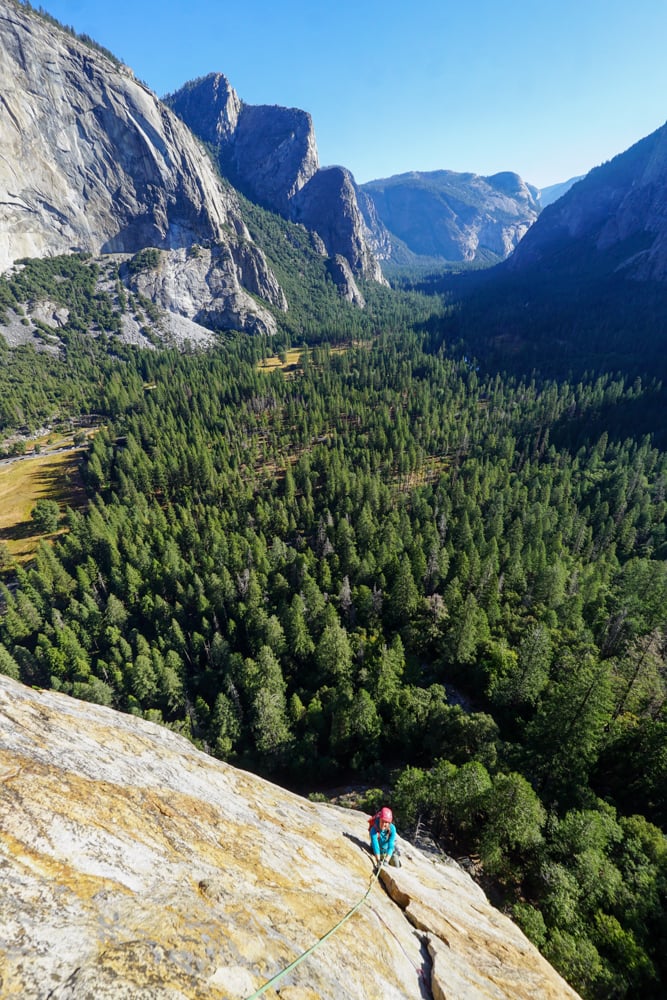
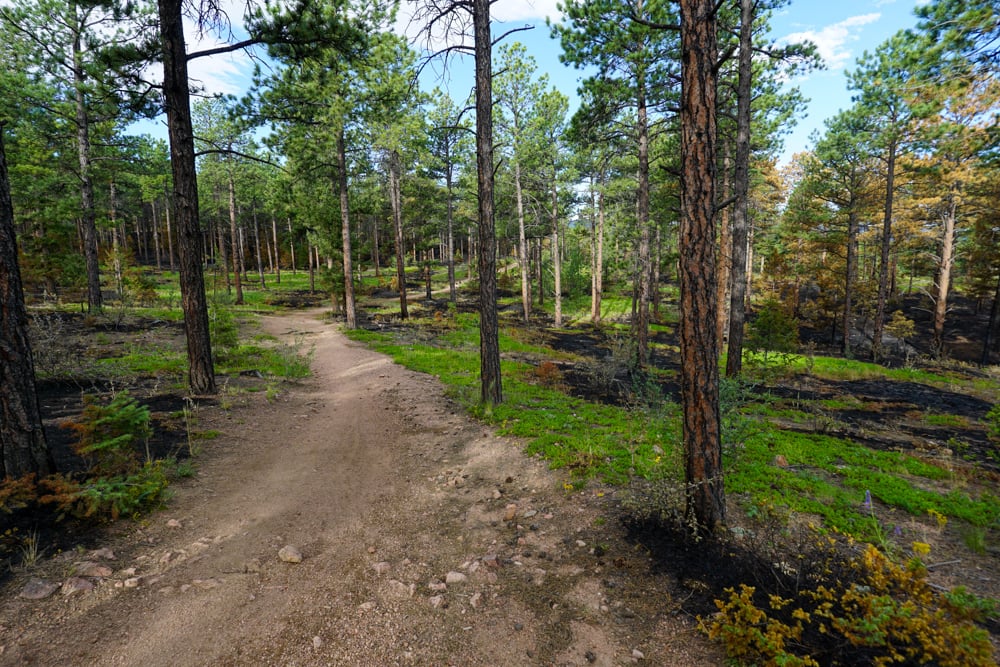

Simple ID Characteristics
A ponderosa pine can be spotted by tall, straight, thick trunks, cracked in its reddish orange plates of bark and its fluffy forest green pine needles. The needles are found in bundles of three and up to seven inches long. Their needles are longer than almost all other pines found near them which is a dead giveaway to take a closer look.
Lifespan: The ponderosa averages around 300 years, but the oldest known tree is in Colorado with an age of 1047 years.
Size: Their height averages 60-130 feet tall with a max of 262 feet (USDA website).
Bristlecone Pine (Pinus longaeva)
This tree is a titan of cool facts and incredibly underrated! This is another beloved tree of mine and in fact my trail name while hiking the Colorado Trail was Bristlecone, because I loved to share facts with fellow thru hikers about this incredible tree… and because I was relatively “old” to my fellow thru hikers at the ripe old age of 32.

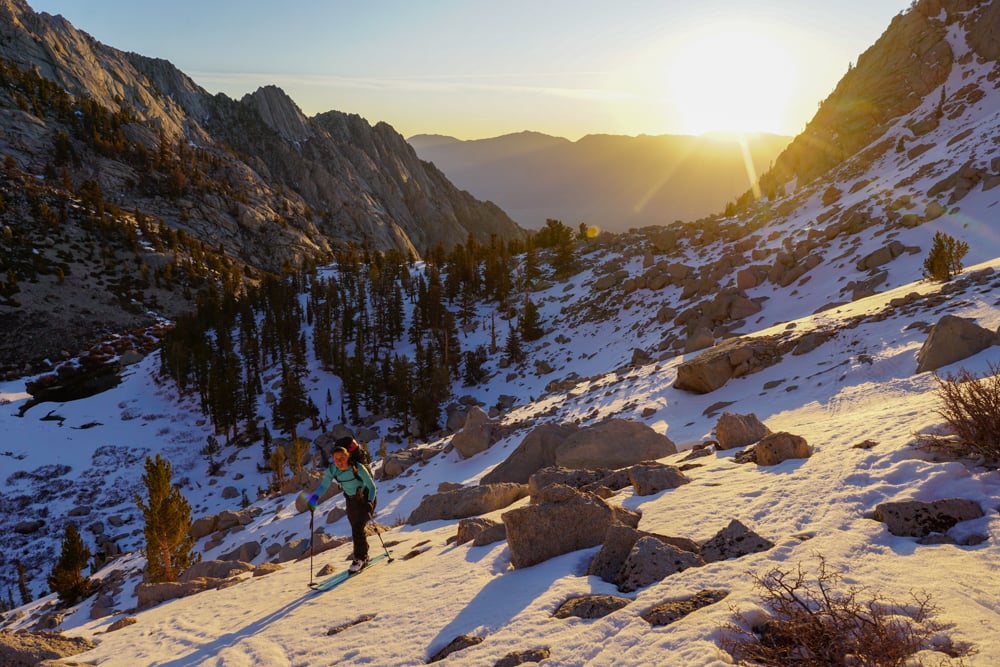

Cool Facts
Bristlecone Pines grow in the harshest environments and are the oldest trees on earth. The bristlecone pines grow extremely slow and have very dense wood that feels like a rock to the touch. On Wheeler Peak, NV, it is estimated that the diameter growth rate is one inch per century! These trees survive wind, snow, lighting, drought, and generally just refuse to die. If just enough tissue to connect one root of the tree with a handful of leaves remains intact the tree will continue to live. These trees are tough as nails! Truly some of the most hardy species found on this planet. The bristlecone pine is an important tree for dendrochronology since the trees are so old and resistant to rotting, their tree rings can be used to calibrate radio carbon dating and gives an idea of the change in climate. Humans have a continuous chronology of tree rings dating back to 6700 BC thanks to the bristlecone pine (University of Arizona).
Where can they be found?
These trees are found at high elevation in poor rocky soils. They thrive in harsh environment and are very drought tolerant. There are three varieties: Great Basin Bristlecone Pine (Utah, Nevada, Eastern California), Rocky Mountain Bristlecone Pine (Colorado, New Mexico, Arizona), and the Foxtail Pine (California). Emma and I had the pleasure of visiting these ancient trees outside of Bishop, CA, but also have found them while hiking the Colorado Trail and skiing near Mt. Charleston, NV.
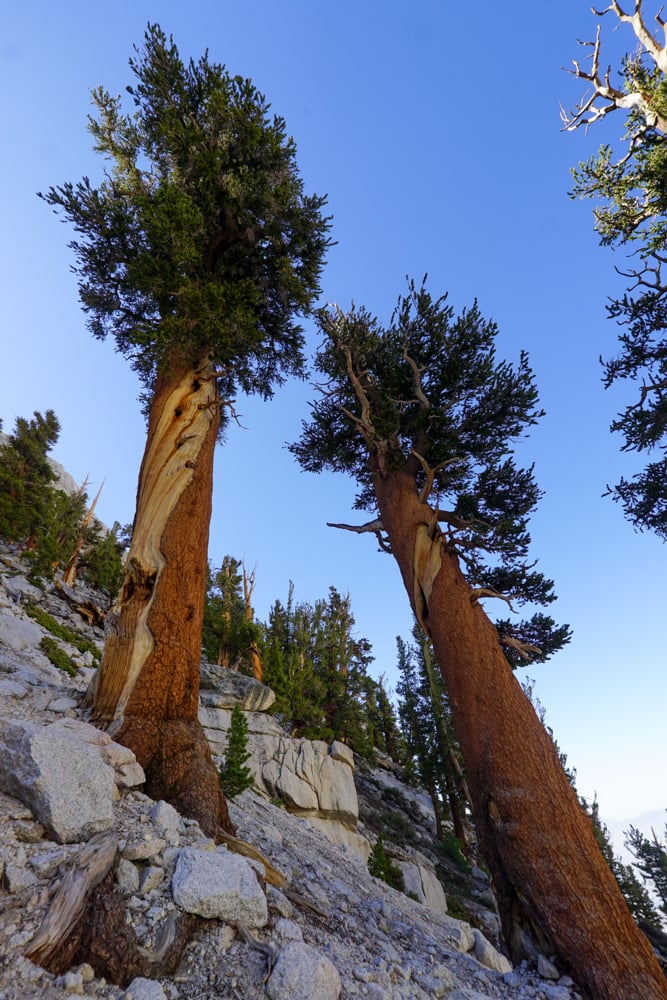
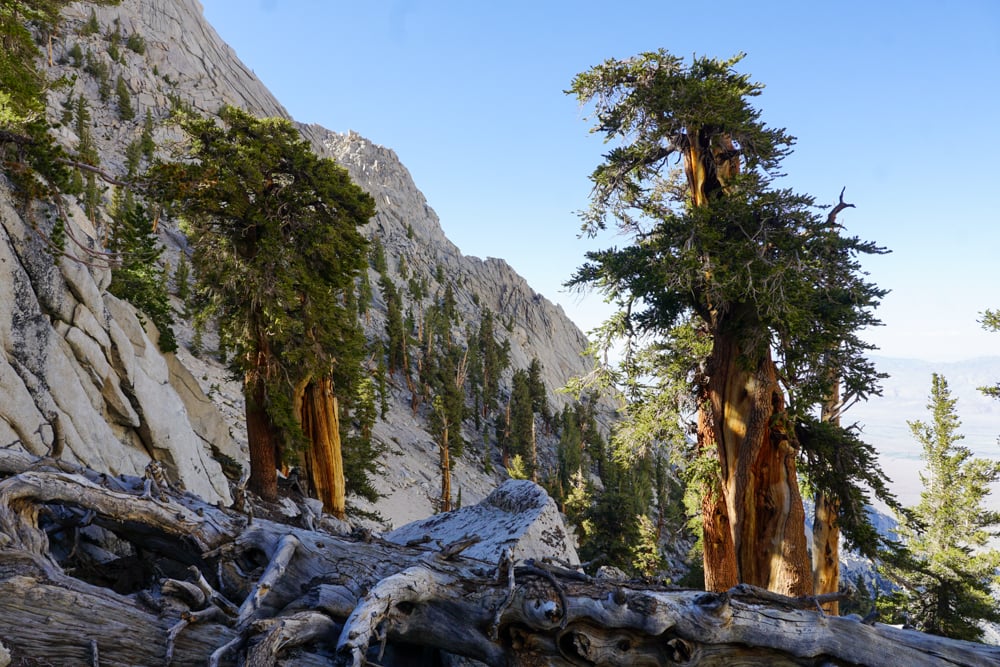
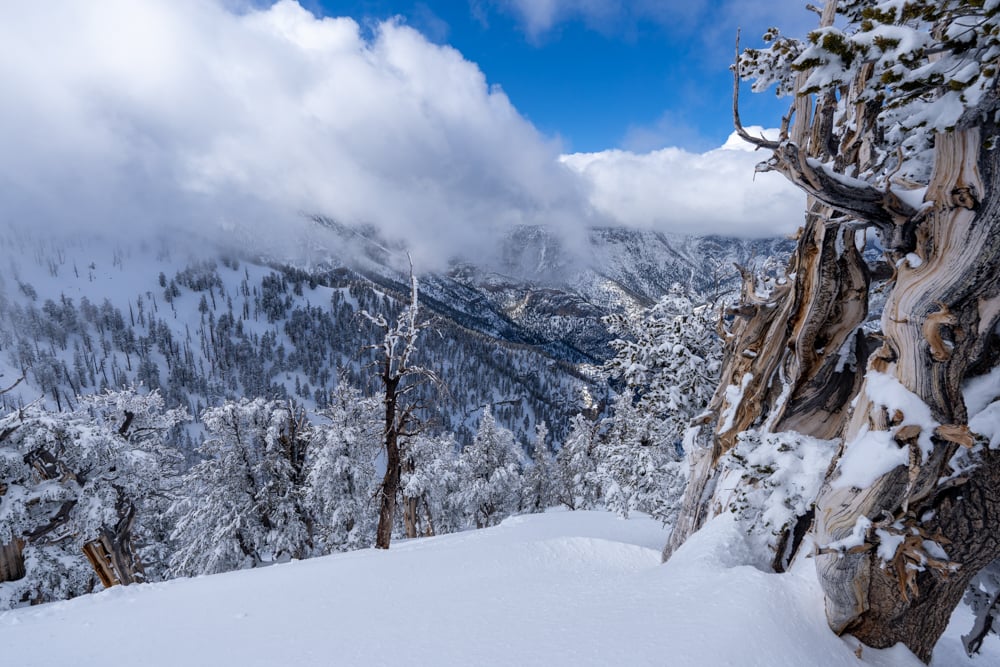
Simple ID Characteristics
Bristlecone pines have short one inch needles in bundles of five which are tightly packed together to preserve heat loss. Their cones are small but have large bristles on the ends of the cone scales. Generally you’ll know them when you see them because they look gnarled and look like they are half dead.
Lifespan: The bristlecone pines typically live to be thousands of years old. The oldest known tree is 5065 years old.
Size: Due to their slow growth and harsh living conditions, bristlecone pines only grow to be 20-60 feet tall. They are generally short and warped.
Quaking Aspen (Populus tremuloides)
The Quaking Aspen is an iconic tree in the mountains of Colorado and Utah, providing the primary source of fall color to the mountains.
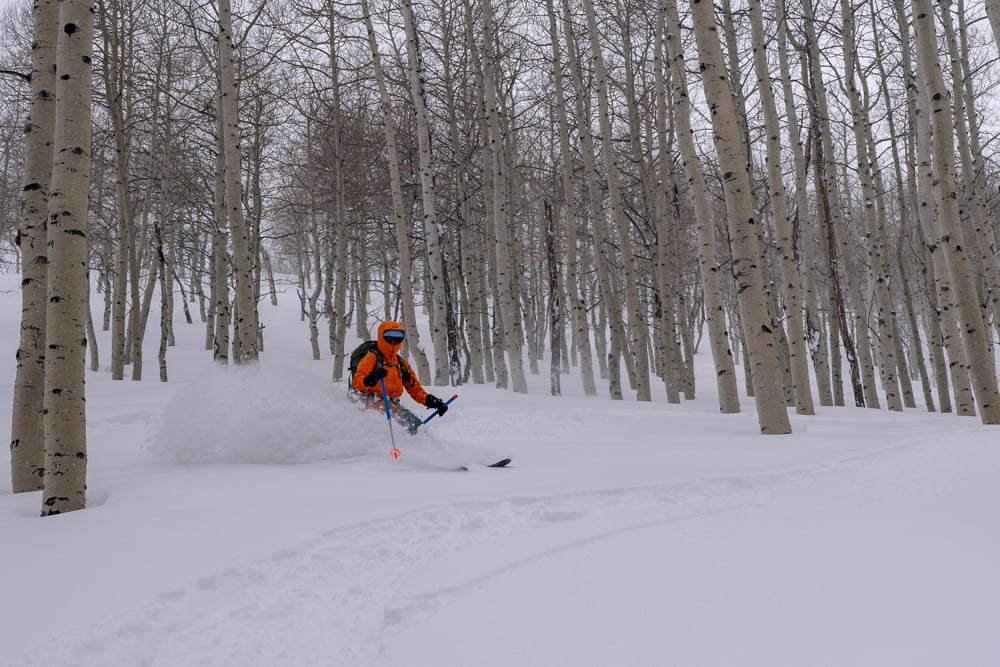

Cool Facts
Groves of aspens can be connected through roots, meaning an entire forest of aspens could be one plant. The famous aspen Pando, is estimated to be 80,000 years old, which would make it possibly the oldest organism on earth. Beloved to the mountains of the western U.S., aspens put on a spectacular show in the fall, changing from bright green to beautiful shades of gold that can rival any deciduous forest. One of the first cool facts I learned is that the powder on the aspen bark can be used as sunscreen (5 spf). I will also note here, that although it is popular to see people carve their initials into the bark of aspen trees, it can seriously damage and even kill the tree, so please remember to respect the living aspen trees around you and refrain from leaving your mark on the forest.
Where can they be found?
The quaking aspen is found all across North America, and is in fact the most widely distributed tree in North America; coast to coast from the Arctic to Mexico. Emma and I have recreated among them in all the mountains of Colorado and Utah, and they were our only fall foliage this past fall in California.
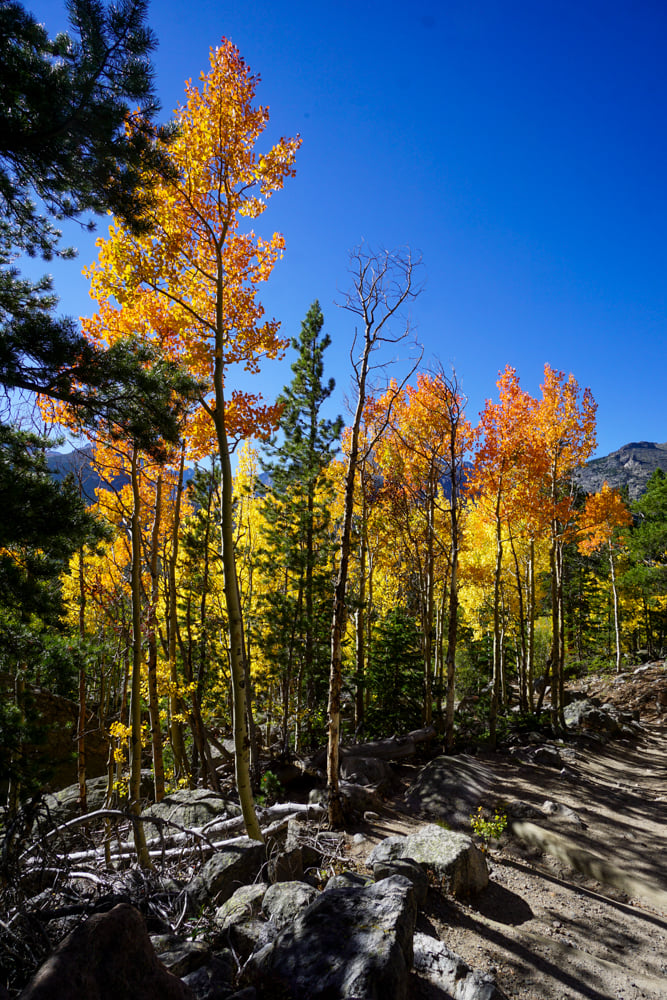
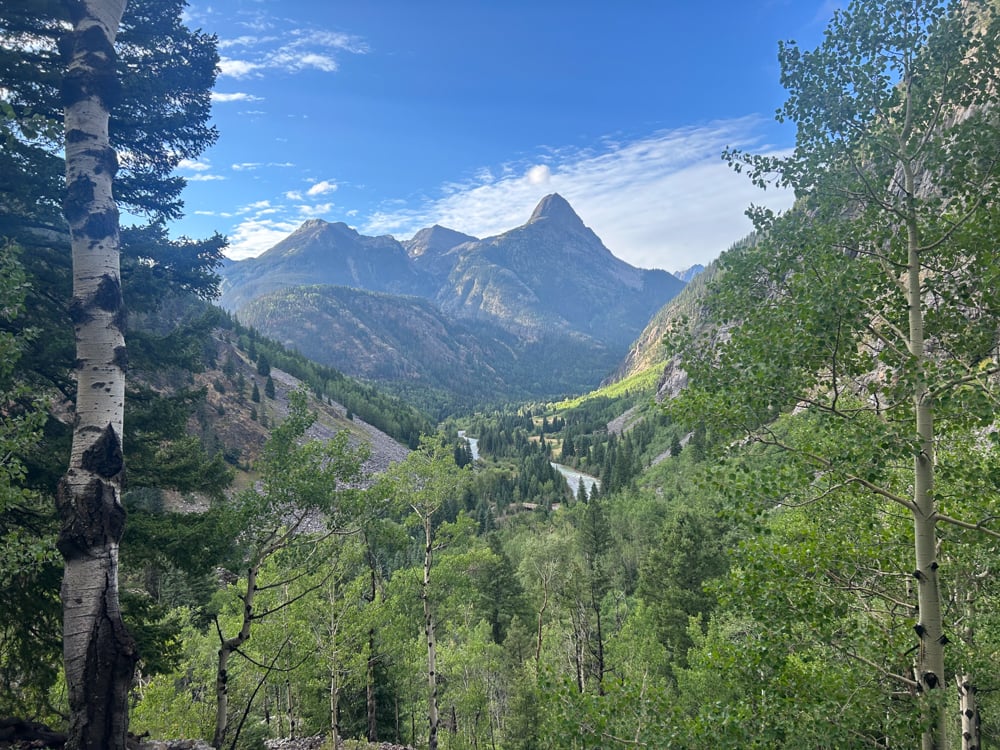
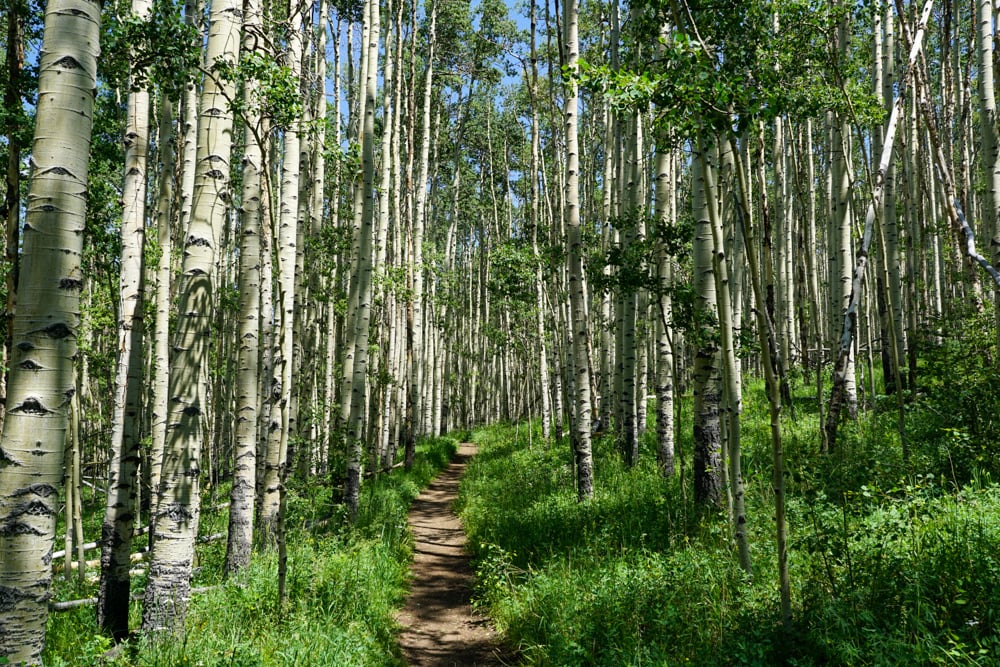
Simple ID Characteristics
Aspens can be identified by their smooth white bark from top to bottom. Their leaves are typically heart or nearly circular shaped and appear as if to dance in the wind, hence the name quaking aspen. This is caused by the leaf and the petiole (the part that attaches the leaf to the stem of a tree) wanting to bend on a different axis. The leaf wants to flutter up and down, whereas the petiole wants to bend side to side resulting in them fluttering rather than swaying in the breeze. Give the leaves a closer look next time you’re close to an aspen. In the fall they can be found in shades of gold, orange, and even red.
Lifespan: The individual trees typically live 50 – 150 years, but an aspen stand can live for tens of thousands of years.
Size: Aspens are usually around 40-50 feet tall.
Juniper
The juniper is a beautiful and unique tree that Emma and I have come to love after seeing it in many places in the western U.S.
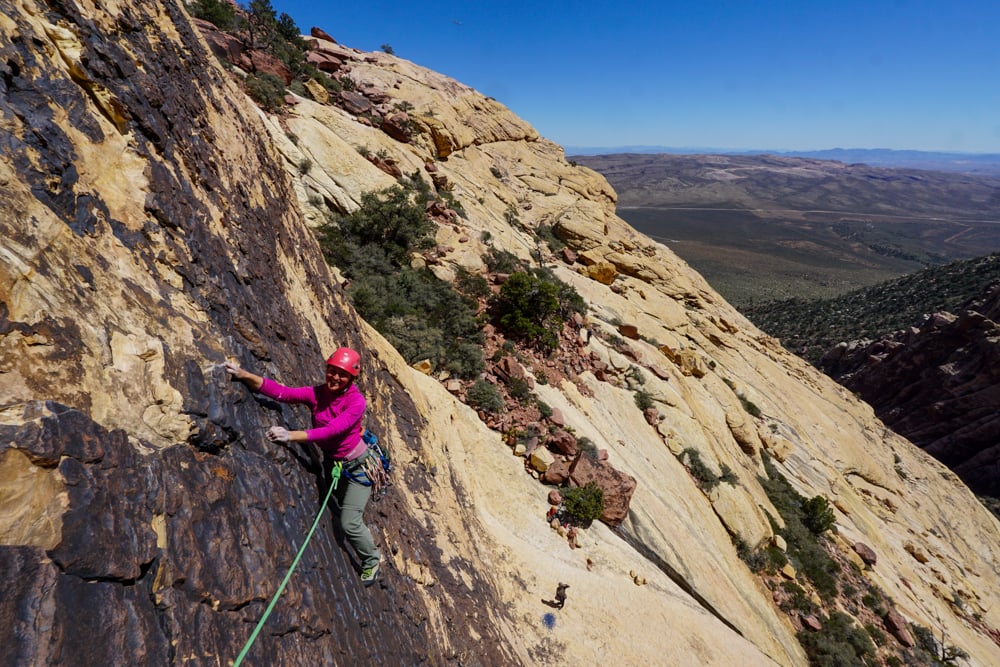
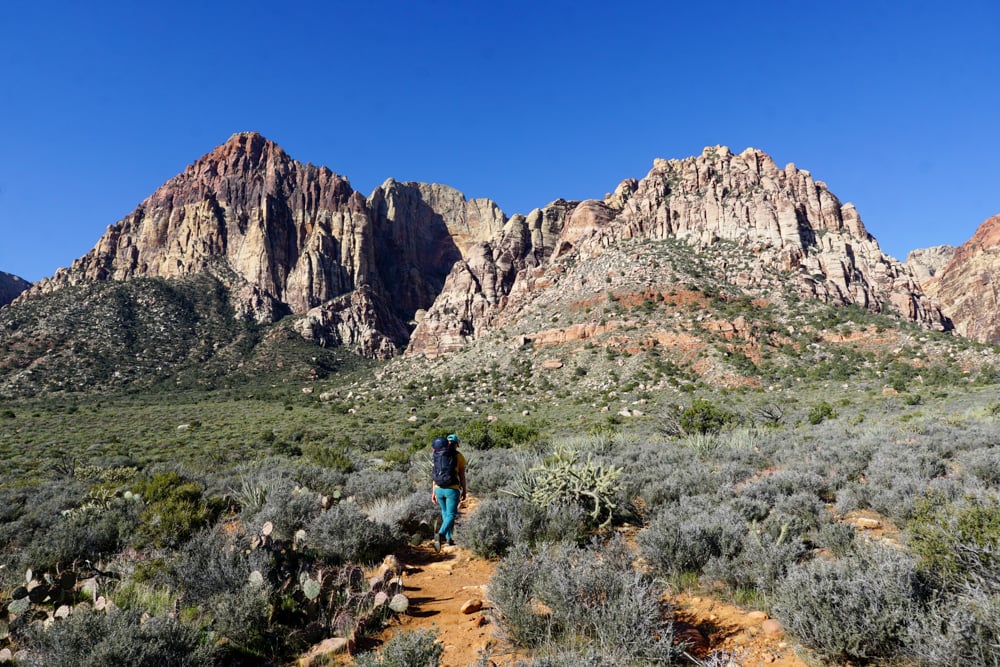
Cool Facts
The juniper is a type of cypress and have what look like scaly twigs, but these are actually the leaves of the tree. Junipers are known for their berries, but their berries are actually their cones that have been modified over time to have a fleshy coating to trick animals into eating them and dispersing their seeds. Juniper berries are also famously used to flavor the alcoholic beverage gin. The name gin even derives from the Dutch word for Juniper (Jenever). Junipers are considered both native and invasive in areas of the U.S., because as humans have altered the land they are expanding their range by outcompeting other plants.
Where can they be found?
There are many different varieties of the juniper found in arid environments at a variety of different elevations in the western U.S. Emma and I have had the pleasure of climbing next to them in the desert of Utah, hiking among large junipers in the Eastern Sierra, and camping alongside them in Nevada.
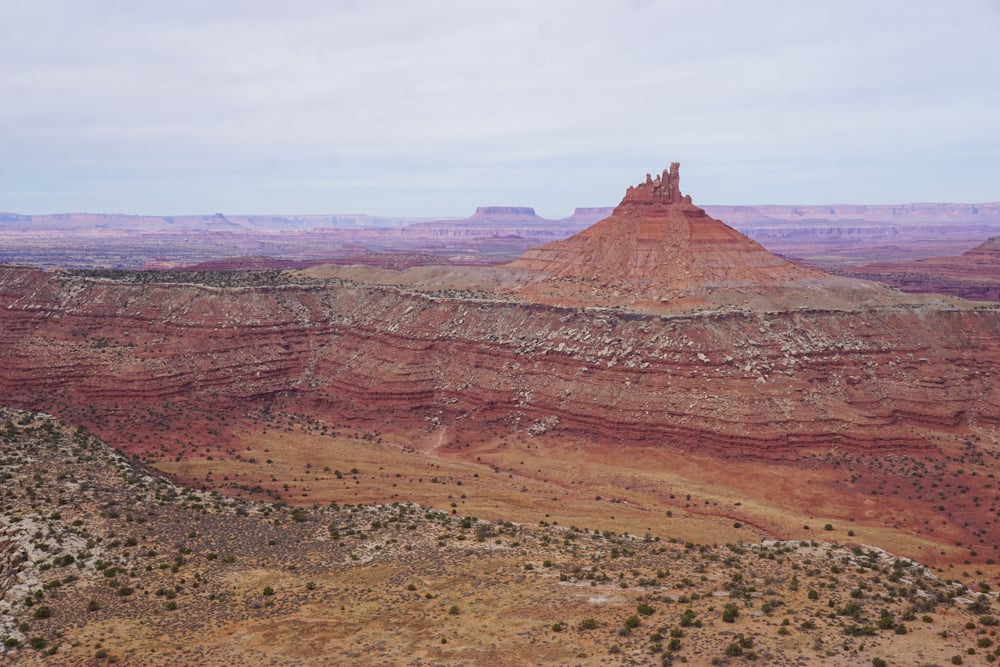
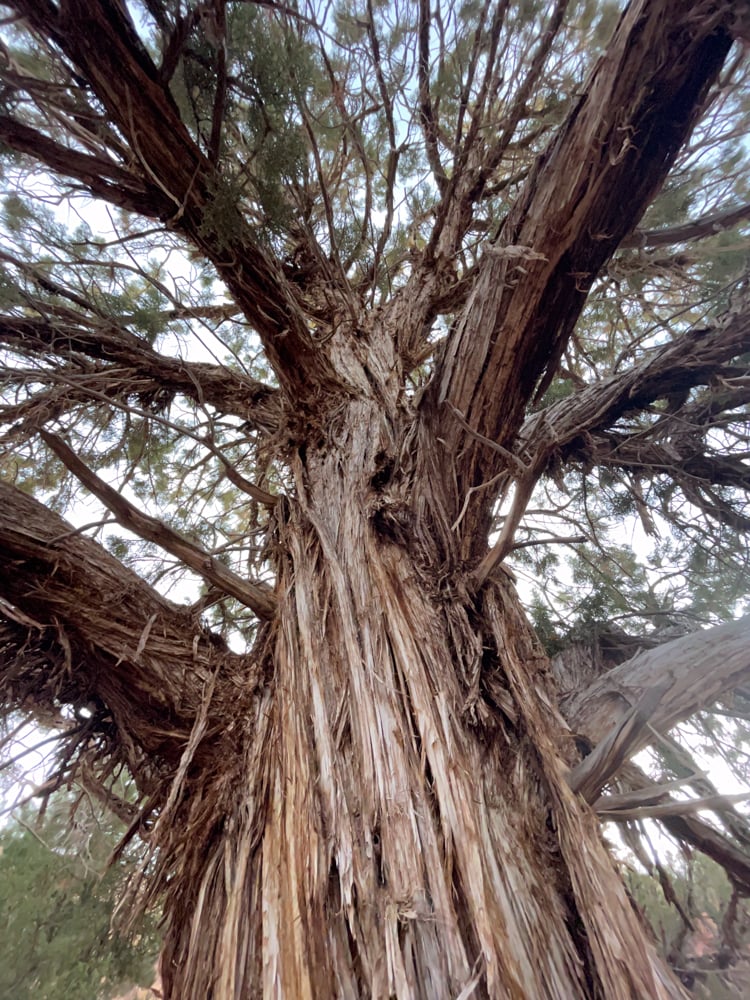
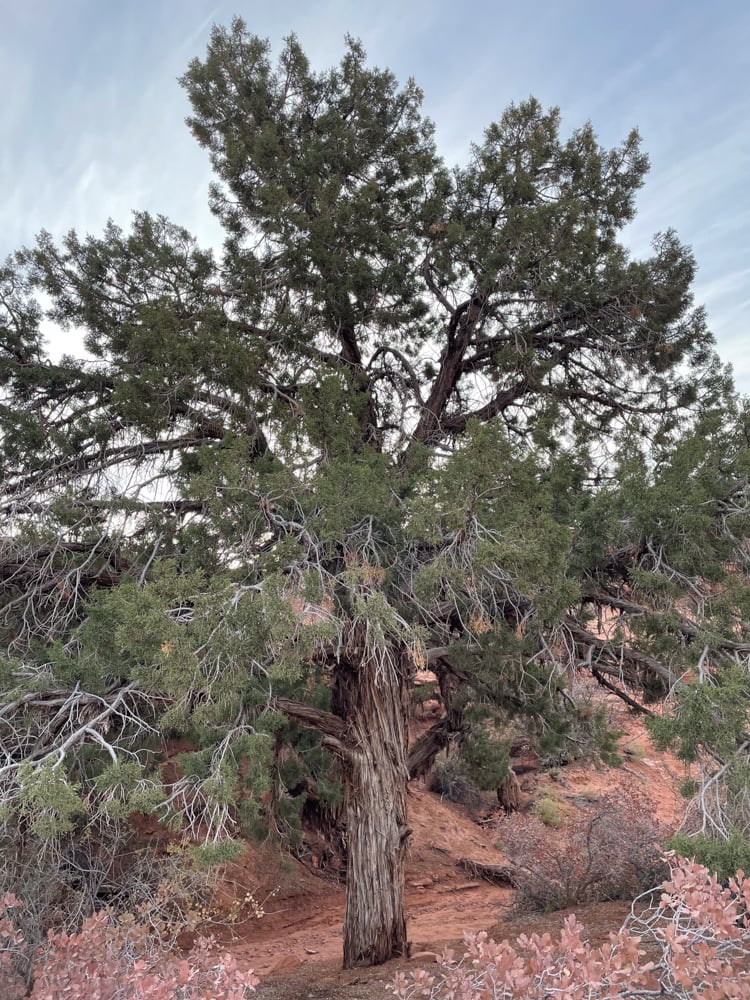
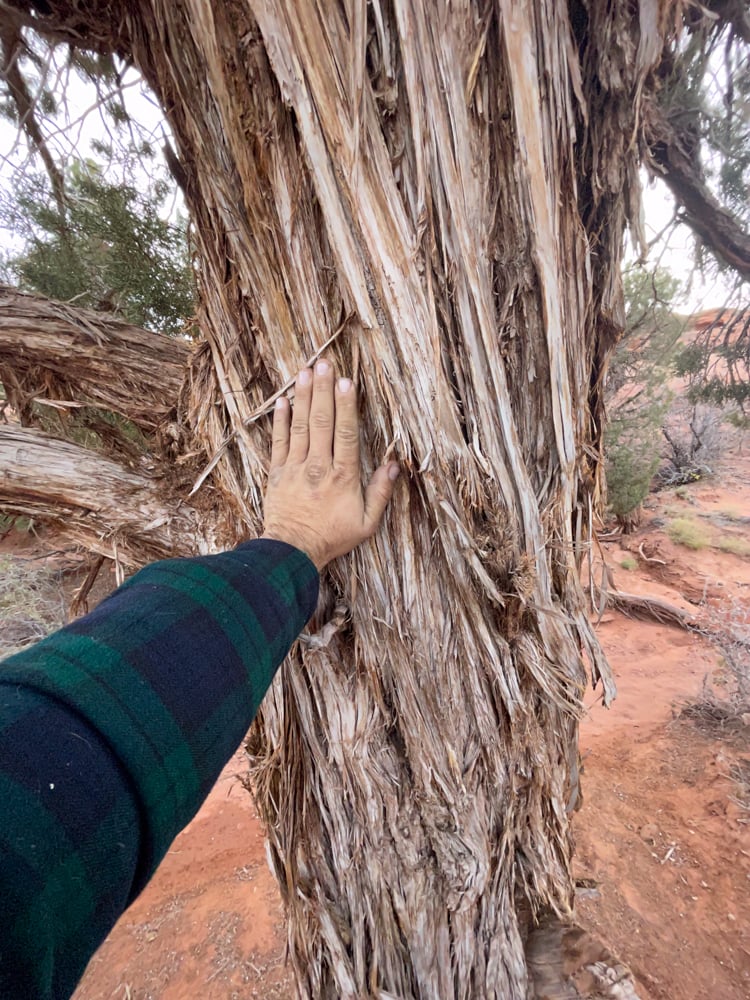
Simple ID Characteristics
Junipers have flat scale-like leaves instead of needles with blueish ‘berries’ that look like blueberries. Junipers have grey-brown fibrous bark. In particularly harsh environments they can be quite small and look more like a bush than a tree.
Lifespan: Typically 350-700 years, but some have been found to live several thousands of years.
Size: Often 15 -30 feet tall.
Western Hemlock (Tsuga heterophylla)
This is one of Emma’s all time favorite trees! Emma first came across them skiing in British Columbia and fell in love with how elegant they look covered in snow. She loves them so much she had a Western Hemlock tattooed on her arm. These are the idyllic tree you think of when you think of a winter wonderland with trees drooping under heavy snow.
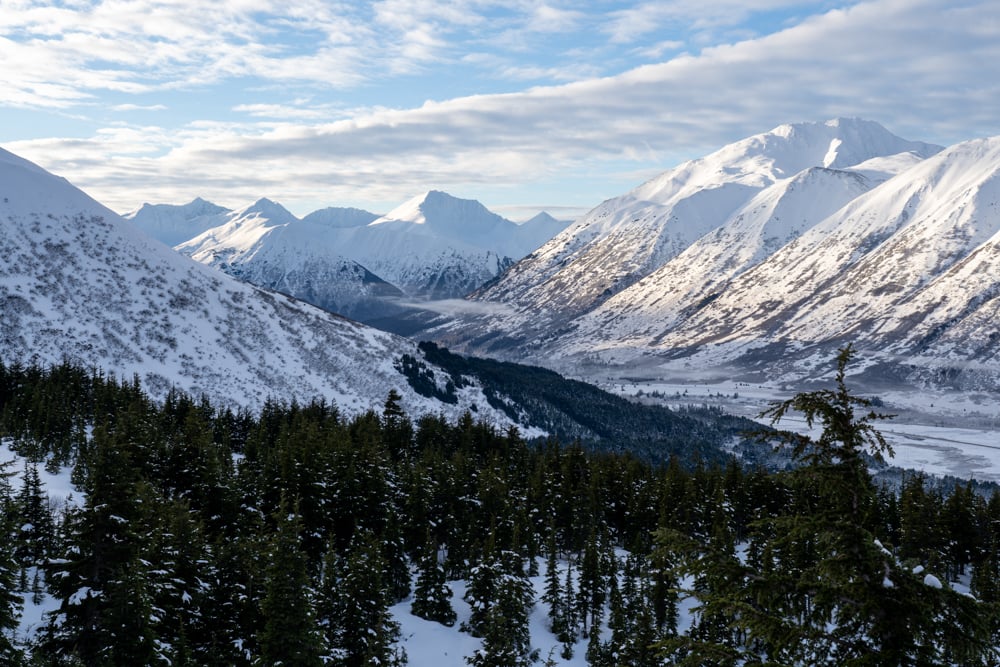
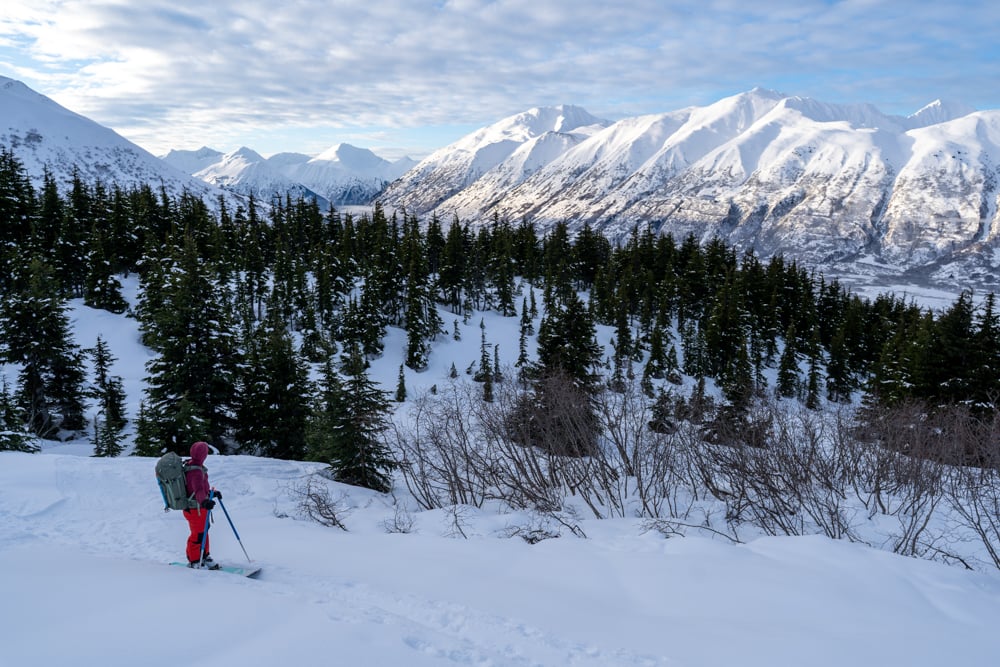
Cool Facts
The western hemlock is a climax species meaning they are the last stage of growth in a forest and will remain and dominant an environment until it is disturbed. Most of the range of the tree is within 60 miles of the Pacific Ocean! This is one of the most shade tolerant plants, able to grow with very little light. This allows them to slowly creep up under the shade of other giants like the douglas fir before taking their places as kings of the forest. The wood of the western hemlock is very commercially important and has many uses as lumber and pulpwood.
Where can they be found?
Western hemlocks can be found on the coast from Northern California to Alaska, and inland from Idaho into the Canadian rockies. They thrive in temperate rainforests. The western hemlock has been one of the primary trees we’ve skied and hiked alongside in Alaska. Emma has also skied alongside them in Revelstoke, Canada and camped among them in coastal Washington.
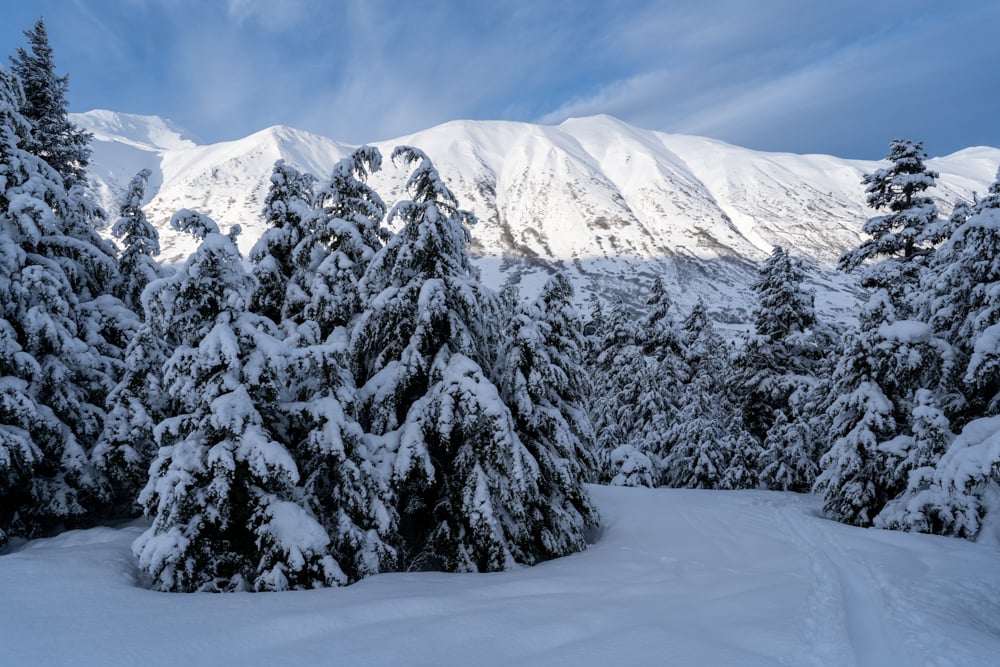
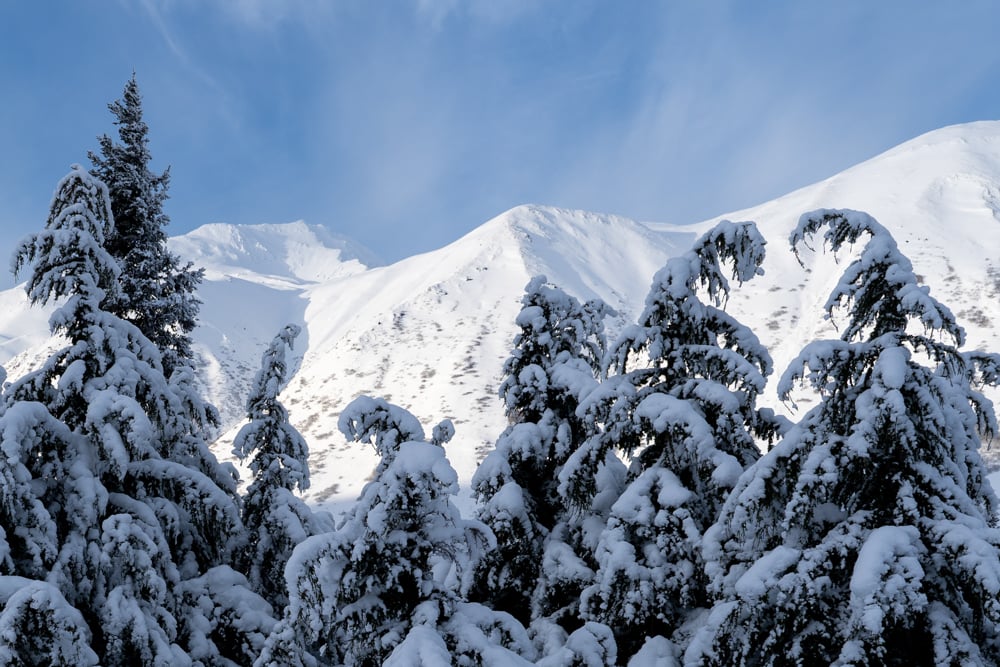
Simple ID Characteristics
The western hemlock has small papery cones less than an inch in length. The tree is characterized by droopy branches, including the top of the tree and feathery foliage. The flat glossy soft needles are green on top and white underneath. Unlike spruce needles which are sharp, fir needles are soft to the touch so next time you pass one, give it a friendly hand shake.
Lifespan: Typically 200-400 years, but have been found up to 1200 years old.
Size: They average 75-120 feet tall.
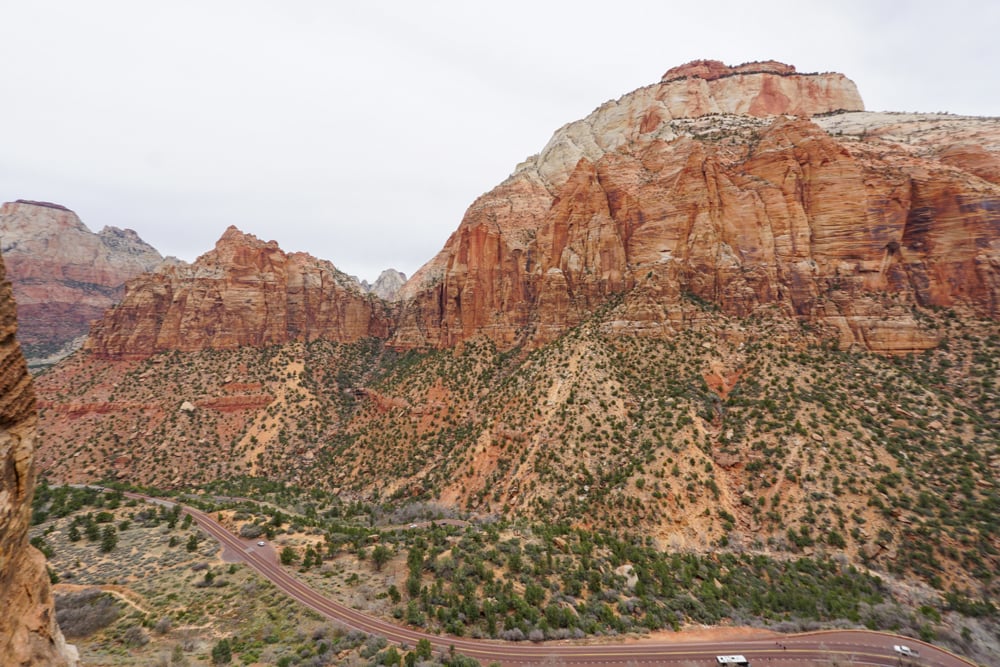
Resources
If you want to learn more about these amazing trees, here are some very helpful resources and places I used to fact check myself for this blog.
The Sibley Guide to Trees, Written and Illustrated by David Allen Sibley
The Gymnosperm Database, www.conifers.org
The US Department of Agriculture Plant Database, plants.usda.gov
The US Department of Agriculture/ USFS Fire Effects Information System (FEIS), www.fesi-crs.org/feis
The National Park Service, www.nps.gov
The USFS, www.fs.usda.gov
Although not a cited source for pure accuracy, one of our favorite podcasts which is put on by a dendrologist and his friend talking about how cool each tree is, we HIGHLY recommend Completely Arbortrary, arbortrarypod.com.




